Continuous biomass to biochar production line realizes the reduction and resource utilization of waste biomass with its unique pyrolysis technology and design. Biochar production equipment is increasingly used in agriculture, environmental protection, energy and other fields.
Biomass, as the raw material library of biochar making machine, covers agricultural waste (such as straw, rice husk), forestry residues (such as sawdust, branches), livestock and poultry manure, and some industrial organic waste.
Biochar production equipment provides an efficient and environmentally friendly solution for the treatment of organic waste. Organic waste such as agricultural waste, forestry residues, and livestock and poultry manure are put into biomass charcoal making machines and converted into biochar through pyrolysis.
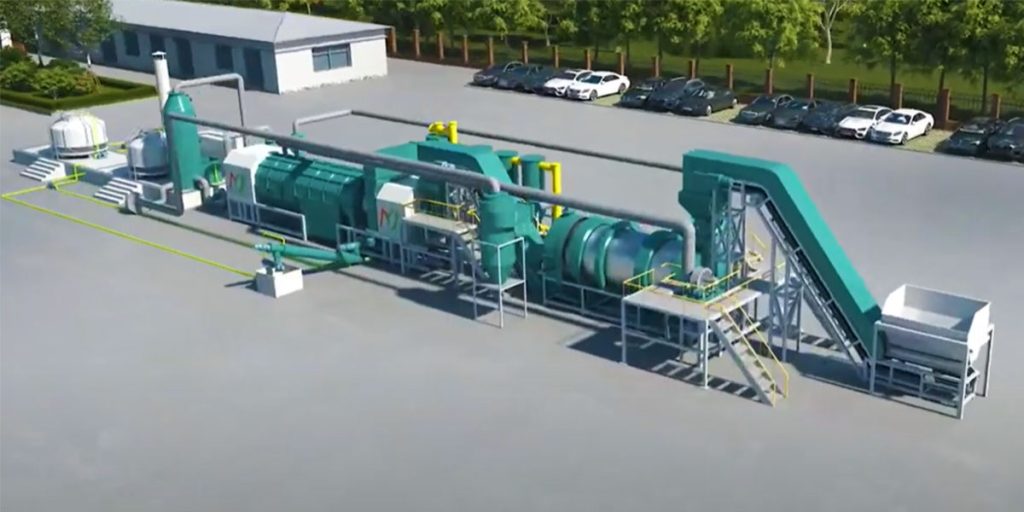
The biochar production line converts low-value biomass waste into high-value biochar, syngas and bio-oil by precisely controlling the pyrolysis process (temperature, atmosphere, residence time).
The working process of Mingjie fully continuous biomass to biochar production line includes the pretreatment of raw materials, precise control of the biomass pyrolysis process, collection of biochar products, and exhaust gas purification.
Raw Material Pretreatment
Large raw materials (such as branches and wood blocks) need to be processed into smaller sizes (usually less than 2 cm) by crushers or chippers. This helps to increase the contact area of the raw materials and improve the subsequent drying and pyrolysis efficiency.
Excessive moisture content in the raw materials will significantly increase energy consumption, reduce pyrolysis efficiency, and affect the quality and yield of biochar. Dryers are usually used to reduce the moisture content of the raw materials to 10%-20%.
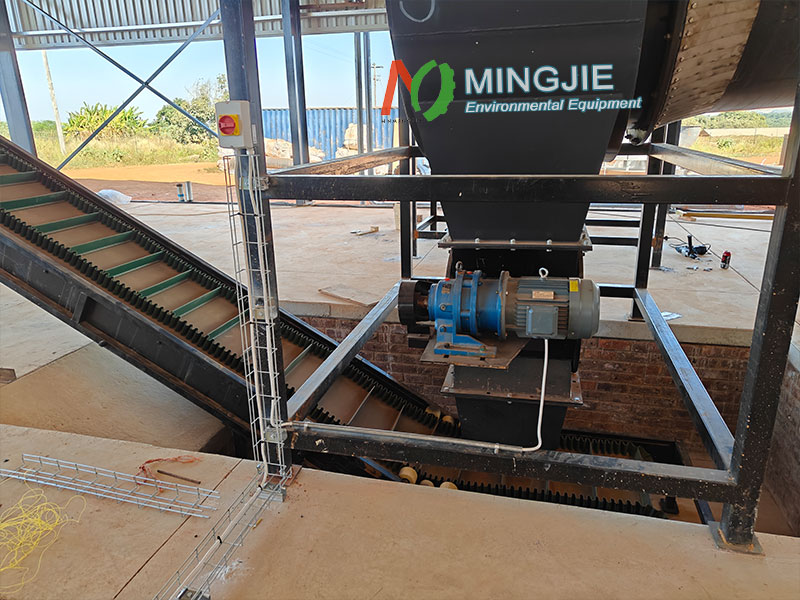
Continuous Feeding
The pretreated dry materials are fed into the pyrolysis reactor through a sealed feeding device. The core is to prevent air from entering the reactor and ensure an oxygen-deficient environment.
Biomass Pyrolysis Process
The material is heated to a certain temperature in the pyrolysis reactor (the optimal temperature is between 450°C - 600°C). The material tumbles forward in the inclined, slowly rotating cylinder and is heated evenly. Staying in an oxygen-deficient or anaerobic environment for a certain period of time helps the carbonization of the biomass.
Separation of Biomass Pyrolysis Products
The biochar is discharged from the bottom or end of the reactor at a very high temperature (usually above 400°C). After high-temperature biochar is discharged, it must be quickly cooled to near room temperature to prevent it from slowly oxidizing in the air and degrading its quality.
Pyrolysis gas is discharged from the top of the reactor as a high-temperature mixed gas. High-temperature pyrolysis oil and gas first pass through a cyclone separator or a high-temperature filter to remove entrained carbon powder particles.
Bio-oil is condensed from condensable oil and gas. The oil and gas enter the condensation system, and the condensable components (mainly bio-oil and water) are cooled into liquid. The condensed liquid and non-condensable gas are separated in the gas-liquid separation tank.
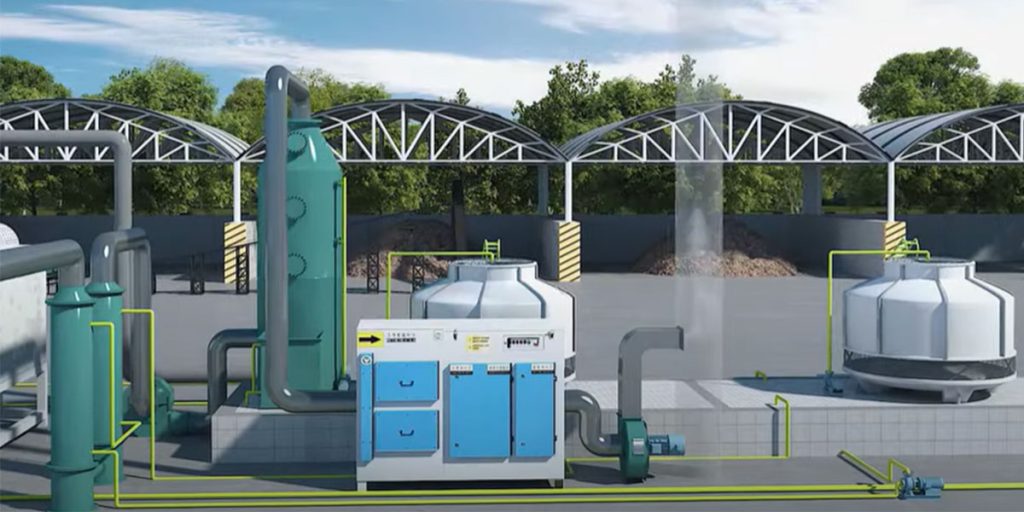
Flue Gas Purification
The flue gas generated by burning pyrolysis gas needs to undergo strict purification treatment (such as bag dust removal, wet desulfurization, denitrification device, activated carbon adsorption, etc.) to ensure that it meets environmental emission standards.
Waste Heat Recovery
The waste heat of each link of the system (such as high-temperature flue gas) should be recycled as much as possible (drying raw materials) to improve overall energy efficiency.
The wide application of Biochar has led to a continuous increase in demand for biochar production equipment. Without advanced and efficient Biochar Production Equipment, it is difficult to achieve large-scale, high-quality production of Biochar. The performance of the biomass pyrolysis plant directly determines the output, quality and production cost of Biochar.
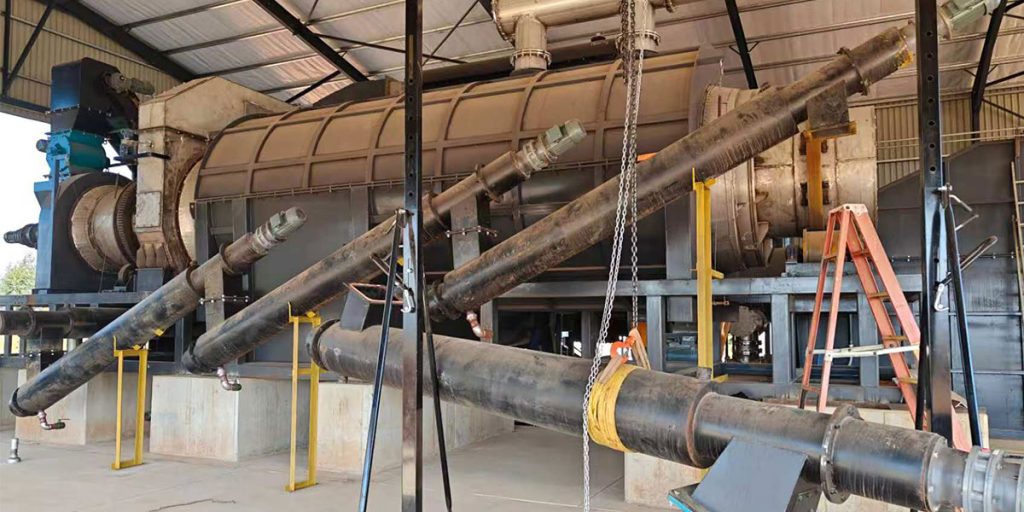
Mingjie Group is a professional biochar making machine manufacturer. Our biomass carbonization equipment uses a continuous pyrolysis process to convert biomass into charcoal. We offer multiple models of biomass to biochar production line, including MJT-500, MJT-1000, MJT-2000, MJT-3000, and MJT-5000. Their waste biomass pyrolysis capacity ranges from 100-5000kg/h.
In addition, the biomass pyrolysis process also forms useful by-products, such as syngas and tar. The syngas can be used to heat the carbonization furnace, it undergoes multiple dust removal processes before use.
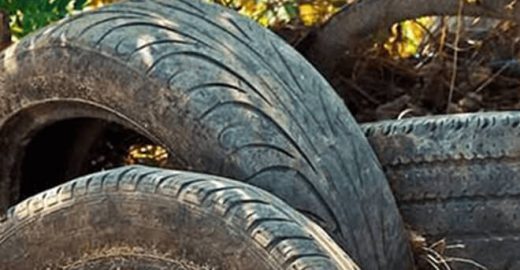
An Australian general waste and tire recycling authoritative body turned to Environment Minister Sussan Ley in November last year with a request to prohibit whole bale tire…
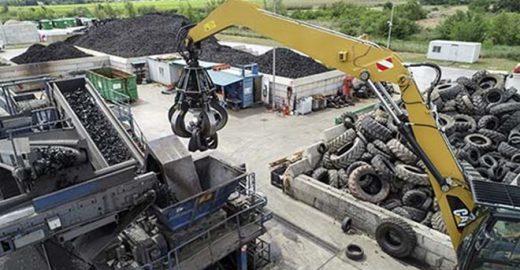
Aliapur – a French end-of-life tire management authority – recently announced a call for applications to participate in a tender to renew end-of-life tire collection and recycling contacts for 2021–2024..